The Ultimate Guide :
How to Get Rid of Squirrels in Your Attic or Home
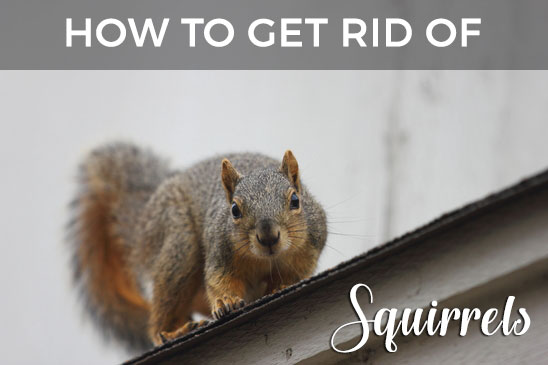
Attics are great hiding places for many household pests like squirrels, rats, mice, bats, etc, and unfortunately, when animals move into your attic, your attic suffers extensive damage. The damages can range from a torn-up book to destroyed electrical wires, all the way up to broken furniture and such. And, one of the most common culprits are the squirrels in the attic, they can get inside your home with relative ease because they are mobile, agile, small, and can jump from one place to another quite easily. So, how does one get rid of squirrels in your home? First, you must learn how to prevent them from getting in and deal with the problem at hand before taking on much more.
To avoid major headaches which arise from unwanted pests taking refuge in your house, you must regularly check for symptoms, or indication that shows they have been around. Symptoms are droppings, destroyed property, unwanted noises, etc.
And what’s one of the most common (and serious) pests found in attics across the United States?
The infamous Squirrel
The old ‘squirrel in attic’ distress call is an extremely common situation pest control companies have to deal with, so learn the best way to manage your squirrel problems before they get out of hand…
The Facts: All About Squirrels

Squirrels belong to family Sciuridae (Latin for small or medium-size rodents), and this family has roughly 265 species spread throughout the world. They are extremely intelligent creatures, which makes it a tough job to easily remove (and keep them out) of your attic once they have made it their home.
They may look cute and entertaining but don’t be fooled by the dangers they can bring to your house, and even worse, your family. More often than not, squirrels will take up residence in your house’s attic and if not discovered quickly, you’ll have a hard time dealing with the problem.
Your main concern: squirrels are EXPERT chewers
The following article will give you more important insights into squirrels in your attic, how and why they love to reside in your attic as well as the hazards they may pose. If your attic has been taken over by these pests, then you’ll need to know what to do to eradicate them, and more importantly, you will learn need to learn techniques on how to keep them out for good!
Do it once, and do it right; Learning the best ways to get them out of your attic, and keep them out of your attic, will solve your squirrel problems once and for all, and save you money in the long run.
Why Do Squirrels Love to Stay in Attics?
Squirrels in the attic, just like other pests, seek the best place where they can live and thrive. They need a place where they can easily find food, give birth, stay warm, and stay out of a human’s path. Unfortunately, when they decide on your home to be an ideal place for to live, they can cause damage to your property in a few different ways.
Apart from your bird feeder (if you have one) your attic is mostly commonly the number 1 choice for squirrels, and therefore, it’s also the most at risk of being destroyed.
Why do they love the attic?
Attics are warm, dry, and mostly uninhabited. They are ideal places where a group of squirrels can settle down and build a nest, get and store food, and be protected from other enemies outside.
When Are Squirrels Most Active?
Squirrels are most active in late winter, during their mating season, in the morning and evening. They can also be seen doing amazing acrobatic actions during this time while the male will actively chase the female squirrels.
When they are in your attic, they will mostly be active during the day so expect noise during the sunlight hours.
Dangers of Having Squirrels In Your Attic & Home
Squirrels are total nuisance when it comes to the damage they cause to your home.
Some examples include:
- They can (and love to) chew through your house’s roof timbers and underneath eaves.
- They can even bite and destroy vents, chimneys, wires and insulation, And since they can chew electric wiring, they can cause fire and electrical hazards.
- Although they are spending most of their time up in your attic, they can even destroy landscaping, gardens and other parts of your property which normally happens when they go scavenging for other sources of food.
- They can gnaw through anything from nuts to wooden beams in your house. If they happen to through the wrong wooden member for long enough, this could threaten the structural integrity of your roof.
What Are the Health Hazards to Humans?

People commonly ask if squirrels in the attic can also cause hazards to humans. The answer is yes, to a degree, but the risk is not as high as you would get with other pest infestation problems.
It’s well known that pests such as rats and cockroaches are known to be carriers of disease such as leptospirosis, diarrhea, and more.Squirrels can also bring health hazards into your home but there is little danger to humans from any disease carried.
However, in larger quantities, their feces/droppings and urine can be a cause of risk to salmonella infection if it happens to come into contact with humans. Leptospirosis is another risk, which can also be acquired from their urine or droppings, leading to multiple organ failure in the worst case scenarios.
For these reasons, we advise you to identify their droppings as soon as possible.
Squirrel Droppings - What Do They Look Like?
Squirrel poop looks Similar to rat droppings, or mice pellets, but a little larger. Usually oblong shaped pellets, around 3/8 of an inch long and 1/8 of an inch thick (but of course, this varies depending on the size of the squirrel).
Fresh droppings are a very dark brown, and the older they get, the lighter they turn. The main difference between squirrel and rat droppings are the size (squirrel poop is generally larger) and color change: squirrel droppings tend to turn much lighter with age (so they will turn to a lighter brown color)
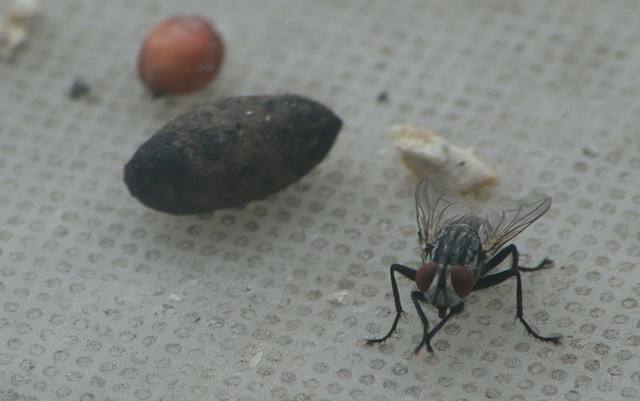
Another risk with squirrel infestation is the possibility that they carry fleas and ticks, which will now be inside your house. These little pests can bring your family health risks such as tick fever, skin diseases and other pest infestation.
How Do They Get Into the Attic In the First Place?

This is one of the most important issues when dealing with squirrels. Removal is not so hard, but keeping them out may be tricky, and it’s vital in order to minimize the damage they wreak on your home.
As you are aware, squirrels are experts at climbing and jumping. Be aware of the following:
- They have the ability to gain access through very small holes (around 1.5 inches) and will also chew the hole bigger for easier access.
- It may not be obvious to you where these holes exist, but there can usually be around, corners, vents or pipes.
- There is also the possibility that they can enter from your garage, walls or even under stairs and decks.
- Wherever there are holes, there are possible entry points.
Common Signs That Squirrels Have Made Your Attic Home
Although squirrels are well-known to thrive in outdoor wooden areas (such as in forests), they can also find their way and love to be in your home’s attic. Before you can learn how to get rid of squirrels in your attic, first you have to learn if it is indeed your problem. Read the tips below to figure it out.
The following are signs that there are squirrels in your attic:
- Noise - The first sign that there are squirrels in your attic is commonly the scampering and rattling sound during daytime. They are very active animals and they usually come and go regularly, causing noise.
- Chewed out Holes or Cavities that could be Entry Points - If you find obvious possible entry points that have been chewed bigger, you can be sure that a squirrel is the main culprit, as they are expert chewers.
- Droppings- Finding their droppings is a common sign. This goes hand in hand a foul odour (almost as foul as bat droppings), coming from your attic.
- Exposed Wiring and Chewed Wood - Exposed wiring (which is a major concern) should not only alarm you, but give you an obvious clue that you’ve got squirrels. Also, since they are expert chewers, you will find that there are wooden parts everywhere that have been chewed.
- Nesting debris - such as leaves and sticks, and kindling.
Tips On How to Get Rid of Squirrels From Your Attic & Home
The million dollar question is: 'How to get rid of squirrels in the attic?'...Unfortunately, running around your neighbor-hood yelling "there's squirrels in my attic" wont solve the problem. Hands down, the most effective way is to call in a professional, who will do it right the first time.
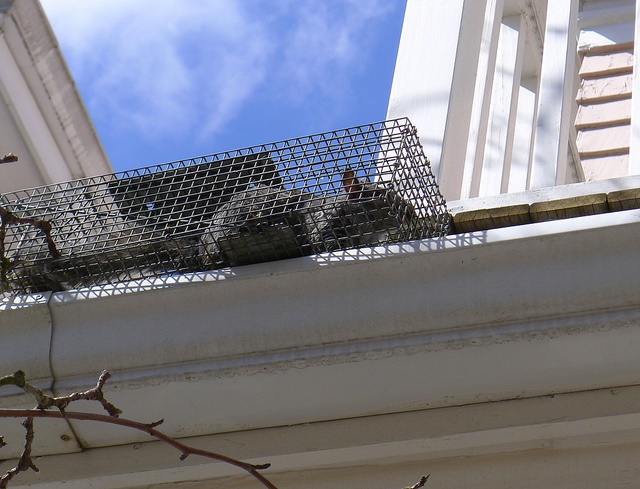
Follow these simple steps to get rid of squirrels in your home:
- Seal off the entry point of the pests.
- Set the right squirrel trap.
- Use the proper bait.
- Draw the pests out of their hiding.
- Relocate the animals safely.
- Use repellents in and around your home for pest prevention.
For the DIY man, methods available include cages/traps, exclusion techniques, repellants, and poison. If you will be going down the DIY route, click here to discover a list of helpful tips.
If you want to learn more about squirrel proof bird feeders then you have to read this article.
How to Trap (or Catch) a Squirrel - Using Cages and Traps
The first issue you should be dealing with, and the question that you have probably asked yourself a few times, is “How do I catch a squirrel?” or “how to trap the squirrels?”
Using cage/trap with bait, can be very effective in trapping squirrels. There are a dozen types of squirrel traps available (some lethal, some are not), and they will only work if you choose the right one for your situation. It's best to consult and expert on which type of trap is best for you.
Here are some common traps:
Body Grip Traps
These are lethal traps, and in most cases, are not the best option. They work like a giant mouse trap, and are placed over entry holes, crushing squirrels as they enter. You can find several different types available.
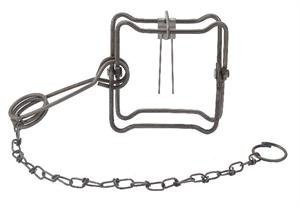
Live Cage Traps
These live traps are a far better option as it can trap the animal but not harm it in any way. After you’ve captured the pest, you can safely remove them from your home and relocate them far away from your property.
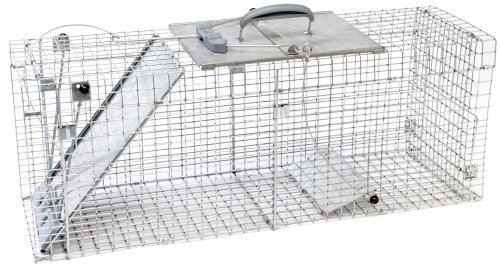
One Way Exclusion Doors
Just as the name suggest, one way exclusion doors. One way in and no way out for the pests!

Our verdict (and you’ll find it’s the same opinion for many wildlife removal experts across the states) for the squirrel trap is using repeater live cage traps, or one-way exclusion doors (once all entry holes have been sealed)
What Is the Best Squirrel Bait?
The best squirrel bait when using cages and exclusion doors is whole peanuts (shell on) or peanut butter - no need to go out and buy 'special squirrel bait' - it's a waste of money.
Simply go to your local supermarket and pick up a packet of unshelled peanuts for less than $3!
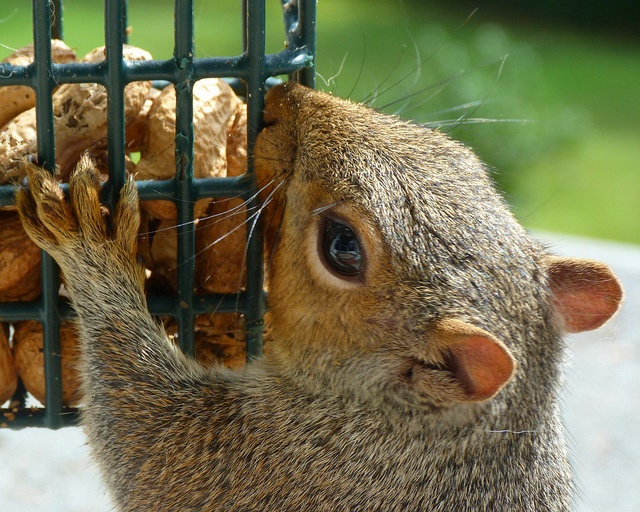
How to Get Repellents - Can You Repel Squirrels, and How?
Ultrasonic repellents (learn more) and radio sounds can disturb squirrels making them think that the attic is no longer an ideal place to stay in. Having the attic lights on or installing flash lights in the attic can also help getting rid of squirrels.
There are also commercial repellent for squirrels which you can purchase from stores. Ammonia and mothballs are said to be also used to scare squirrels away but there are no proven studies and evidences that prove their effectiveness.
The verdict: repellants rarely work (if at all), and this is especially true for natural squirrel repellants or homemade squirrel repellants. The best squirrel stopper is preventing them from entering in the first place
Exclusion Techniques
Make sure you are confident that all squirrels (including newborns) have been removed from you attic before putting an exclusion plan into place.
Since squirrels get into your attic through holes and cavities, it is best to patch and mend these entry points permanently:
- Holes chewed in timber - Patch and reinforce with thick and strong timber coverings.
- Vents - secure heavy duty steel screens, and fix these screens down appropriately (using screws of bolt)
- Soffits/eaves - repair obvious damage and missing sections with concrete sheet (or your existing soffit lining material) and sealant
- Roof holes - repair and roof holes which should not be there (cracked tiles etc)
- Gaps between roof covering and top plate of building - there is commonly a small allowable gap between your roof covering and the top timber frame member of your house. Sometimes, you house may be built in a way where this cavity is larger, and will allow vermin to enter. If you find yourself in this situation, ensure you have vermin wire installed around the perimeter
Using Poison - How to Kill Squirrels
We Advise Homeowners never to attempt to kill or poison squirrels for a few reasons!
In some cases, people attempt to use the method of poisoning the squirrels as a form of removal. This is not advisable for a few reasons: First and foremost, it’s inhumane, and there is a good chance you will kill a mother squirrel, orphaning her infants in the process (not to mention its often illegal) - do you really want to be a squirrel killer? If you poison a litter of squirrels, you will also have the issue of a decomposing carcass in your attic to deal with - this poses health risks to yourself and your family. Lastly, since there is no registered or known effective poisons for squirrels, its most probably not going to work, so your better of saving your hard earned money and using a squirrel cage/trap or exclusion door.
Recommended : Consulting a Professional / Pest Removal Expert
(Get Rid of Them Professionally!)
Hands down best option that you can take if you want squirrels to be totally eradicated from your attic- permanently.These professionals know best how to get rid of squirrels, especially in some places where permits are needed to do so.
Is It Legal to Trap Squirrels Myself?
Laws vary from state to state when it comes to hunting animals. In some states, you need to have a professional license to capture squirrels when they are causing damage to your property.
This is because in some areas, squirrels are protected and in some states, they are considered game animals. Thus, it is best to check the regulations of your states wildlife department, or consult your local pest management expert.
How to Keep Squirrels Away & Get Rid of Them!

So, once you’re confident you have gotten rid of the squirrels in your attic, you must make sure they stay out.
We’ve all heard the expression ‘prevention is better than the cure’ and this holds strong when it comes of managing household pests.
Squirrels are very intelligent; they will always try to find ways to come back to place where comfort and food are available. Keeping them away may sound simple but it takes some effort and skill to accomplish. Being small and agile, these little buggers have the ability to get into places that other household pests can only dream of. And, as cute as they look, they can still do some damage to your property if you don't take care of the problem immediately.
Since holes and other entry points may be the reason why your attic can be infested by squirrels, the best way is to make sure that they are sealed and there are no openings in any place of the house leading to the attic. Be aware that they can gain access through tiny holes and points you wouldn’t think possible, so you need to know what you’re looking for.
If successful, you can keep squirrels away from your attic, but you can’t easily stop them from entering your gardens or any place in your vicinity where there plants, trees and bird feeders.
Thus, a systematic and effective strategy must be put into action. Do a full inspection of your house. Make sure you check everything, the floor, the walls, the sidings, the roof and of course your attic.
Examine your attic and basement as well as the garage. Make it a regular habit of removing any stray garbage, fallen leaves or twigs, since this will ultimately be squirrel food.
Trimming your trees near the house can also help. Make sure your area is clean and not inviting to pest activity.
In Summary, Keeping Squirrels Away Can Be Done Using the Following Steps:
- Be 100% sure that all the holes leading into the house are sealed – examine all roof vents, dormers, soffits, etc.
- You can either trap all the squirrels using roof - mounted cage traps, or mount repeater traps or one-way exclusion doors on the primary entry/exit hole. Best to consult a pest control professional for this.
- Clean up the attic, with a special antimicrobial fogging agent.
Remember: Prevention is better than the cure
So, before squirrels make your attic home (and in turn damage your property), make sure to go to great lengths to stop them entering your home.
If they have outsmarted you and gained entry, using a trained professional is hands down the best way to get rid of them, and keep them out permanently.
If you’re confident you can do it yourself, follow some of the tips we have shared in this article. Your attic deserves the same attention you give to other parts of your home, so make sure it’s free from any pest infestation.
Lorem ipsum dolor sit amet, consectetur adipisicing elit, sed do eiusmod tempor incididunt ut labore et dolore magna aliqua. Ut enim ad minim veniam, quis nostrud exercitation ullamco laboris nisi ut aliquip ex ea commodo consequat.
